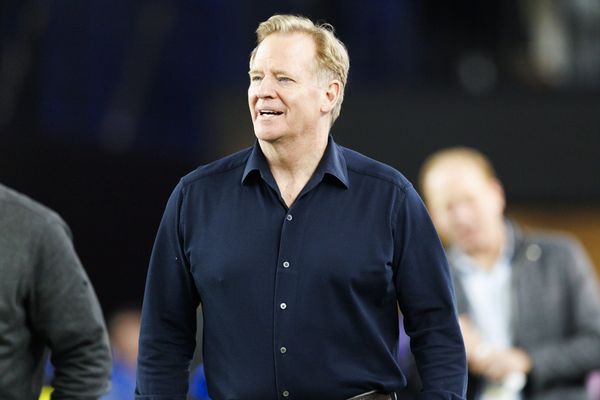
Over the last several years, Anheuser-Busch has been undergoing a mindset change as they put the consumer at the center of their innovation efforts. Leading this change is Dafne Hefner, Vice President of Insights and Strategy for Anheuser-Busch. I sat down with Hefner to talk about A-B’s renewed focus on the consumer and how that focus has impacted both their new product pipeline, as well as the innovation strategy of their biggest brands.
Dave Knox: What falls under your role at Anheuser-Busch?
Dafne Hefner: My role is insights and strategy. What it covers is everything that would help Anheuser-Busch be consumer first. I am currently responsible for setting up the portfolio strategy and the research that we do when we develop our brands, improve our existing brands, and the innovation side of the equation as well.
Knox: When you started the role, how did you need to evolve the consumer insights process at the company?
Hefner: My background is at the intersection of brand leaders and entrepreneurs. I am an entrepreneur turned corporate with a mission of transformation and bringing in what consumer centricity means in real terms. When I joined, I pitched A-B to use technology to accelerate consumer centricity. The mission and the journey was much more intense and longer than I expected from the get-go.
The first thing was literally taking the dust out of research. We had to change our mindset and create a cultural evolution from researcher ‘disaster check’, to see if something could work or not after the fact, to more of the bartender mentality. If you go to a bar and the bartender is a very good one, they will know what you want even before you know it. We had to develop that initial mindset.
After that, we moved to action with a fast, better and first approach. The first step was just to get fast. Everything was very slow in that disaster check mindset where it used to take six to eight weeks to even have consumer feedback. We were a consumer-last, not consumer-first mindset. We brought in technologists to make all the processes a little faster, connecting faster, having feedback and customer co- creation faster. We moved our feedback timeline from six to eight weeks to 24 to 48 hours, using technology as an enabler.
Then the second part was really to get better. We had to create from scratch methodologies and even some technologies. As an example, we developed our own internal consumer panel with over 200,000 people that we can access at any time, plugged in through technology, so we can learn and understand their reaction to things.
And then on the first side, we wanted to have the first mover advantage so we created a predictive platform, very connected to innovations, where we put together a consortium of partners to help connect the dots for us, that we call “Sensors Platform.” We try to predict what will be the next trend, what will be the next big thing in beverages in general.
Knox: As an entrepreneur, what inspired you to join a large corporation like Anheuser- Busch?
Hefner: I was an entrepreneur in data and my background is in computer engineering, so I have always been passionate about data and technology. It was always intriguing to me to see bigger companies having a challenge in consumer centricity. I pitched for the opportunity, tried to bring it to life, defined what consumer centricity was, and tried to use technology to bridge the gap. And that ended up turning into a bigger role encompassing strategy as well, because we had to reformulate not just the methodologies and technologies, but also develop a strategy for the company that reflected our consumer-centric goals. Today we are rebalancing our portfolio for growth, we are building consumer connections and innovations, and we are doing all of that with people at the center. That is why my role has evolved into insights and strategy, because the strategy for the company needed to adapt so that we were ready to take advantage of the intersection of technology and entrepreneurship, which is now ingrained in each step of what we do.
Knox: In order to bring that mindset of entrepreneurship, you have created unique programs like I-Semester. What is that and what role do they play in the innovation pipeline?
Hefner: When we were early on in the journey to refresh our strategy, we knew that innovation would have a big, big role to play. And as we started to evolve on the inside, we knew we had to create a process to build an ecosystem of bringing in ideas from the outside, starting with consumers. And that's where my group and I-Semester plugs in. I-Semester has a goal to develop the innovation pipeline for the company. During the process, we connect with thousands of people, and we have more than 200 employees from Anheuser-Busch participate. Pre COVID, we used to travel across the country, but post COVID, we use technology to actually get into e-contact with consumers. We have conversations about their needs and tensions, trends and some other things. So once we do that for about a month or so, we then bring in entrepreneurs, influencers, product developers, and then we go into an ideation process of developing concepts. Finally, we do a shark tank at the end to identify the winning concepts that could go to market.
Throughout this entire process, we have consumers coming in and giving us feedback along the way. We will go as far as prototyping, having them co-creating, providing feedback on the brands and the concepts. It's quite a new process for us. We have been doing it for three years, but evolving quite a lot and have had some success along the way. It's a process we're very proud of.
Knox: With that innovation process, one of the “Shark Tank” winners has recently gone on shelf. Can you tell us about that product and how did it come about being the winner?
Hefner: The winning product from the last shark tank is a brand called Boxology. Imagine a premium cocktail in a box. It started during the height of the pandemic where we had seen a huge shift in the role that in-home plays in consumption. We were having conversations with consumers and in many of these conversations, there was a need to have a premium product, shareable, that consumers could enjoy at their homes with their group of friends and family. And there was nothing out there that could combine the convenience of a shareable pack with the premiumness of a handmade cocktail. So at the end, we designed a package very similar to boxed wine, but it's a highly premium cocktail with a larger number of servings. We have about 20 cocktails per box, two flavors, and a little bit of a higher ABV, and we're piloting that in market.
This is one of the winners of the Shark Tank that opened up the doors for us for a lot more of the innovations within the Beyond Beer space. It was very interesting to see that now that we've been through a boom of seltzers and more focus on the health and wellness trend, we have seen a lot of the bifurcation of flavors, and people really want a differentiation of flavors and hyper convenience. So we have developed, since then, many other products in our pipeline.
Knox: On the note of flavors, your insights work has had a big impact on the flavor strategy for Bud Light Seltzer. What did your team discover and how did that impact this innovation strategy for Bud Light Seltzer?
Hefner: We meet with a consortium of partners on a regular basis, our Sensors Sessions, to connect different data sets spanning social media, white papers, search data, sales and consumer generated videos, and then we try to extract the trends from it. In one of these sessions, we noticed that within that seltzer space, it was very hard to enter the space with traditional flavors, because consumers were already getting used to certain flavors from certain brands. And we saw an opportunity to develop something that could be culturally relevant, and create products that could have more of a full flavor and appeal to invite consumers to try.
That's how we came up with the idea of the Bud Light Seltzer Retro Summer Pack, which was inspired by tie-dye as a big trend in the summer. That resulted in us developing a much bigger line of culturally relevant flavors. And we ended up then changing the strategy to go to market, because we noticed that once consumers try one of these culturally relevant flavors, they are twice as likely to stay within the brand.
Knox: As we head into 2022, what's your vision for how consumer insights can help A-B lead future growth in the industry?
Hefner: We will continue to drive consumer centricity, which to me should be the role of consumer insights to lead future growth and the industry. The mindset for us now will be the mindset of not just the bartender, but also a mindset of transformation. We are going to continue to be very close to the consumer shifts. Currently we see five shifts that are going to be driving growth in the industry moving forward. When you look at these five, it is about that time tension, how people will make up for time that they lost. It is about being close to the digital acceleration and provide things that help people consume content. E-commerce will be a very big factor for us in how we connect e-commerce to drive consumer loyalty. The holistic health approach, so not just health and wellness and carb and cals, but also the mental aspect of holistic wellness. And then multicultural consumers. All these five consumer shifts we are going to be monitoring very closely, and thinking through a pipeline of products and experiences to address these shifts for the next year, all while connecting them to the core of our strategy.







